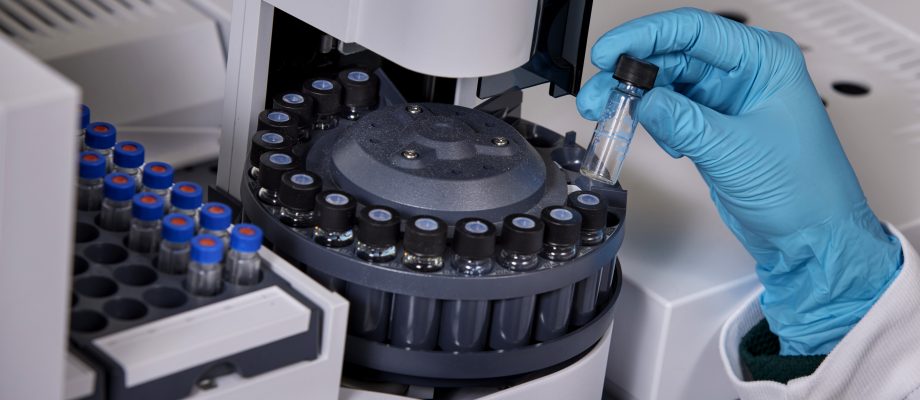GRANT. Lung cancer is the cause of many deaths, mainly because it often metastasizes. Clotilde Wiel is studying the metabolism of different types of cells to understand how lung cancer cells form tumors elsewhere in the body. SEK 2.4 million from the Lundberg Research Foundation is going towards new equipment that Clotilde Wiel hopes will help her with identifying functions in cancer cells that can be targeted for treatment.
The ability to treat lung cancer has improved significantly in recent years. Despite this, lung cancer is still the cancer that causes the most cancer-related deaths, both in Sweden and globally. This is because lung cancer is often advanced when it is diagnosed. About half of patients already have metastases when they are diagnosed. And there are currently no specific treatments for metastases in different organs.
Clotilde Wiel is a researcher at the Institute of Clinical Sciences and the Sahlgrenska Center for Cancer Research at the University of Gothenburg. Her work aims to increase knowledge about metastases from lung cancer. In the long term, she hopes to help develop both treatment for existing metastases and treatment that can prevent metastases from occurring, as well as methods for earlier diagnosis of lung cancer. Currently, her work focuses on studying the metabolic processes in the different cells found in the original tumor, in the metastases, in tissue adjacent to the tumors and in the immune system.
Cells that change
Metabolism is the process of breaking down molecules so that the cell can extract energy from them. With more knowledge about the metabolism of cells in lung cancer, it is possible to understand how the cancer spreads from its original site and metastasizes.

“We know that there is a big difference between the cells in the primary tumor and the cells in the metastases. This is why treatments for primary tumors do not work as well on metastases, most likely they need to be treated differently. The difference is due to the fact that cells change when they move. They make a tough journey via the blood or lymphatic system. Along the way, they end up in very diverse biological environments, which are all different from their normal environment and to which they must adapt. We believe that the different adaptations the cells make can influence which organ they spread to. In addition, they have to transform themselves to avoid detection by the immune system,” says Clotilde Wiel.
Mapping metabolism in cells
In particular, she is studying a metabolite called lactate and its impact on gene expression, the process by which the information in a cell’s DNA is transferred to the cell’s functions. Researchers have found that lactate production increases significantly in metastatic cells. Clotilde Wiel is now working to understand what the next step in cell development is; what lactate does. The hypothesis is that the lactate helps the cell with its transformation so it can move and metastasize. The ongoing adaptation of cells is one of the challenges in research on metastatic lung cancer.
“Because cells are constantly changing, researchers have not been able to identify a specific marker, something in the cell’s DNA that can tell which cells are metastatic, i.e. which ones are forming or will form metastases. Therefore, there is no specific treatment for metastases. One of the ways in which cells adapt is by changing their metabolism, which is why we want to map the metabolism of the cells in the metastases. We also look at cells in tissue close to the metastases as the metabolites are involved in communication between different cells. We are also investigating how cell metabolism and lactate affect the immune system.”
Clotilde Wiel and colleagues in Gothenburg, Sweden, have relatively recently discovered that a patient’s age plays a role in how quickly lung cancer spreads. The risk of metastasis is twice as high in patients older than 60 years compared to younger patients. And Clotilde Wiel’s research shows that the same type of metabolite behaves differently in younger and older lung cancer patients.
New equipment will make a difference
Researchers mainly work with cultured cells from patients’ blood and tissue samples. Studying processes inside individual cells requires advanced equipment. A grant of SEK 2.4 million from the Lundberg Research Foundation will be used for a so-called Metabolic Seahorse Analyzer. It will be a long-awaited addition to the laboratory’s current equipment.
“With the new equipment, we can work with living cells and analyze the ongoing metabolism. It makes a big difference. We can expose cells to different treatments and see if and how they react, if the metabolism changes when we add different kinds of medicinal products, for example. And we can do it on a large scale because the Seahorse machine allows us to work with many different samples at the same time. It gives us a much broader spectrum and will open new doors for our research,” says Clotilde Wiel.
BY: LUNDBERG FOUNDATION
PHOTO: BO HÅKANSSON












Leave a Comment